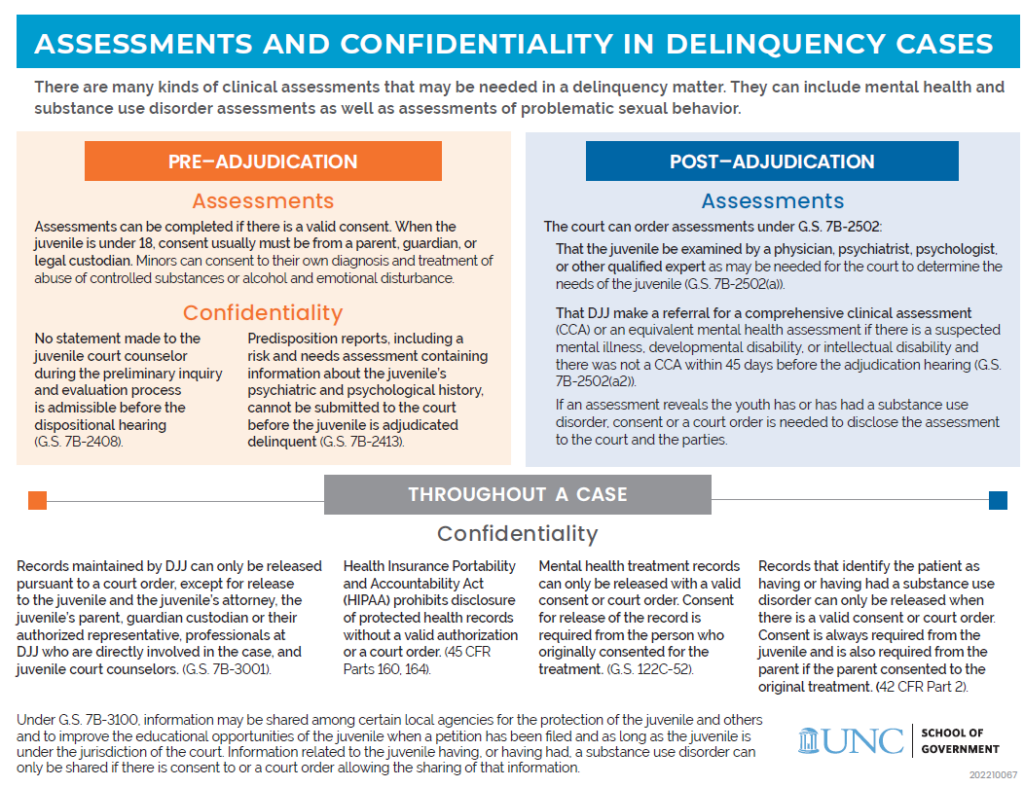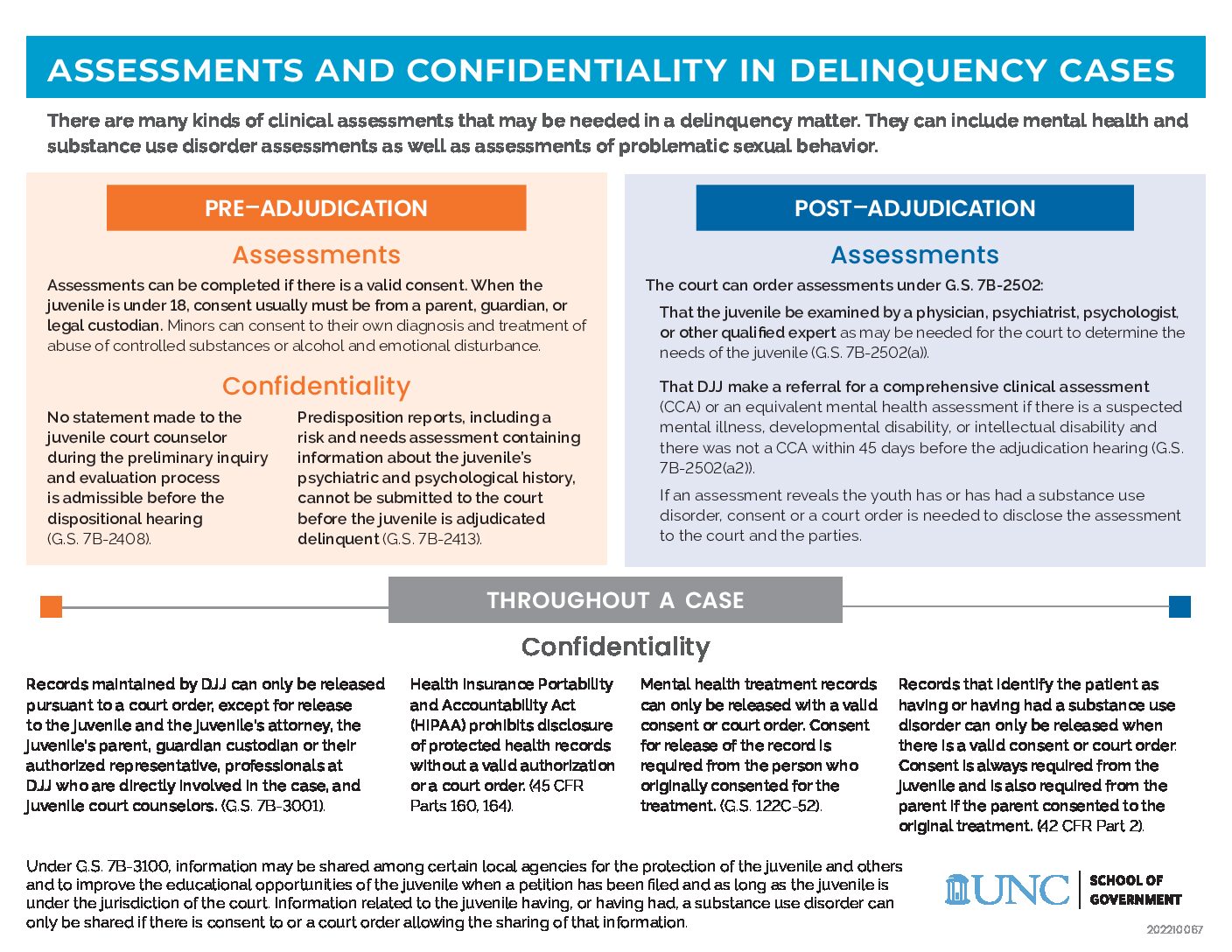
One of the unique features of the juvenile justice system is its statutory focus on identifying the needs of juveniles and resolving matters to provide “appropriate rehabilitative services to juveniles.” G.S. 7B-1500(2)b. In addition to protecting public safety, dispositions should include “an appropriate plan to meet the needs of the juvenile.” G.S. 7B-2500. The caselaw and statutes that govern one form of assessment in delinquency cases—the comprehensive clinical assessment (CCA)—have undergone rapid change in the last few years. Other assessments, such as assessment for problematic sexual behavior or trauma-focused assessments, may also be needed in certain cases. Questions abound regarding when assessments can occur and what confidentiality law applies to them. This new infographic provides a high-level overview of the law that addresses these questions.
